A certain bicycle can go up a gentle incline with constant speed when the frictional force of ground pushing the rear wheel is F2=4N. With what force F1 must the chain pull on the sprocket wheel if R1=5m and R2=30m?
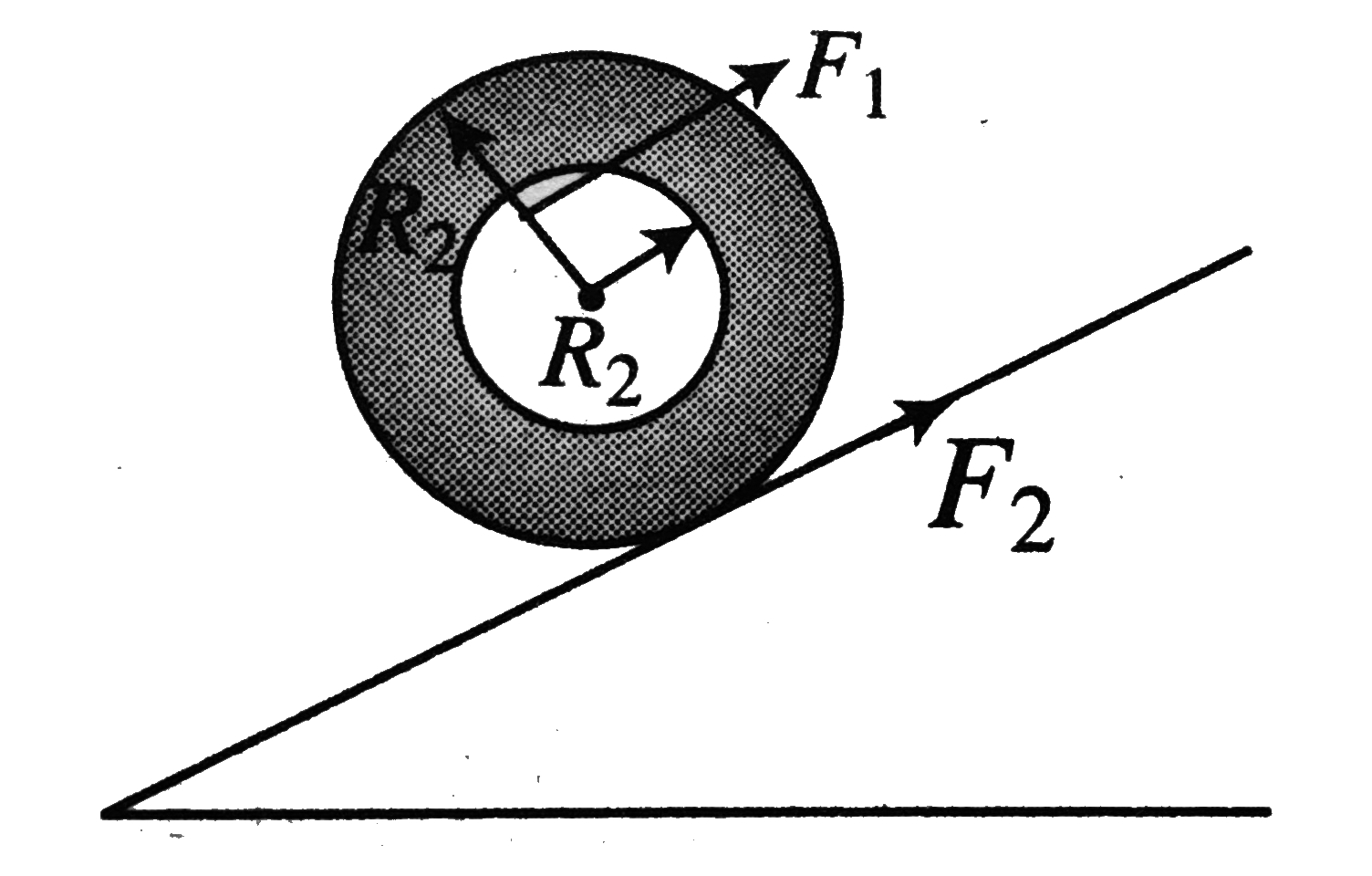
4N
24N
140N
35/4N
The correct Answer is:B
Speed constant so tourque is zero F1×5=F2×30, with F2=4N,F1=24N
Topper's Solved these Questions
- BOOK - CENGAGE PHYSICS ENGLISHCHAPTER - RIGID BODY DYNAMICS 2EXERCISE - Multiple Correct26videos
RIGID BODY DYNAMICS 2
- BOOK - CENGAGE PHYSICS ENGLISHCHAPTER - RIGID BODY DYNAMICS 2EXERCISE - Linked Comprehension71videos
RIGID BODY DYNAMICS 2
- BOOK - CENGAGE PHYSICS ENGLISHCHAPTER - RIGID BODY DYNAMICS 2EXERCISE - Subjective19videos
RIGID BODY DYNAMICS 2
- BOOK - CENGAGE PHYSICS ENGLISHCHAPTER - RIGID BODY DYNAMICS 1EXERCISE - Integer11videos
RIGID BODY DYNAMICS 1
- BOOK - CENGAGE PHYSICS ENGLISHCHAPTER - SOUND WAVES AND DOPPLER EFFECTEXERCISE - Integer16videos
SOUND WAVES AND DOPPLER EFFECT
Similar Questions
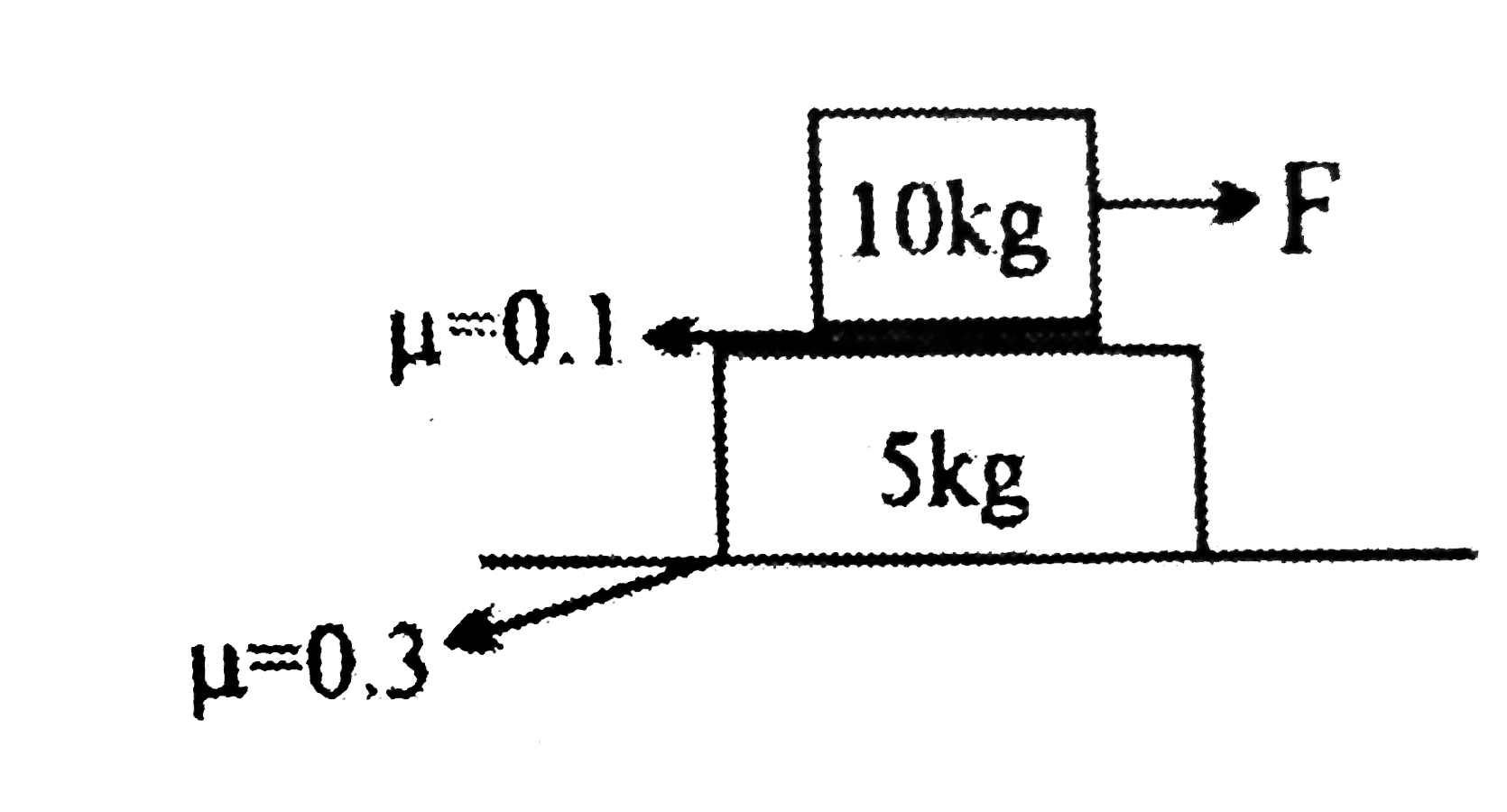
When F = 2N, the frictional force between 5 kg block and ground isView SolutionA horizontal force F pulls a 20 kg box at a constant speed along a rough horizotal floor. The coefficient of friction between the box and the floor is 0.25. The work done by force F on the block in displacing it by 2 m is
View Solution
Knowledge Check
- Question 1 - Select One
A block of mass m slides with constant speed down a ramp whose incline angle is θ. If F1 is the magnitude of the gravitational force acting parallel to the ramp and F2 is the magnitude of the normal force acting on the block, what is the value of F1/F2?
Am tan θBm cot θC1Dtan θ
A block of mass m is lying on an inclined plane. The coefficient of friction between the plane and the block is μ. The force (F1) required to move the block up the inclined plane will be:-
View SolutionA bicycle has pedal rods of length 16cm connected to sprocketed disc of radius 10cm. The bicycle wheels are 70cm in diameter and the chain runs over a gear of radius 4cm. The speed of the cycle is constant and the cyclist applies 100N for, that is always perpendicular to the pedal rod, as shown in figure. Assume tension in the lower part of chain is negligible. The cyclist is peddling at a constant rate of two revolutions per second. Assume that the force applied by other foot is zero when one foot is exerting 100N force. Neglect friction within cycle parts and the rolling friction.
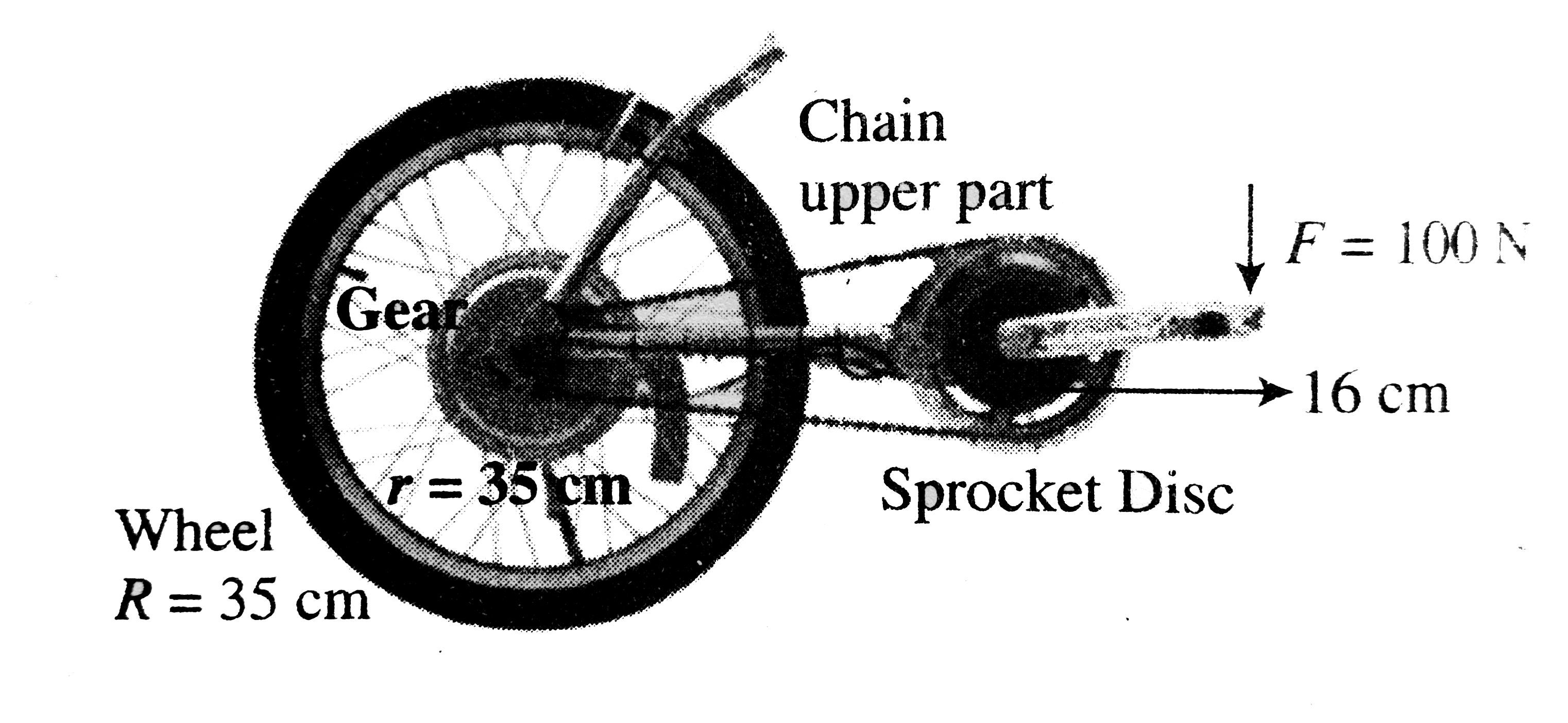
The net force of the friction on the rear wheel due to the road is:View SolutionA bicycle is traveling downhill at a high speed. Suddenly, the cyclist sees that a bridge ahead has collapsed, so she has to stop. What is the maximum magnitude of acceleration the bicycle can have if it is not to flip over its front wheel—in particular, if its rear wheel is not to leave the ground? The slope makes an angle of 37∘ with the horizontal. On level ground, the centre of mass of the woman–bicycle system is at a point 1.0m above the ground, 1.0m horizontally behind the axle of the front wheel, and 35.0 cm in front of the rear axle. Assume that the tires do not skid.
View SolutionA wheel of mass 10 kg and radius 0.2 m is rotating at an angular speed of 100 rpm, when the motion is turned off. Neglecting the friction at the axis. Calculate the force that must be applied tangentially to the wheel to bring it to rest in 10 rev. Assumed wheel to be a disc.
View SolutionA wheel of mass 10 kg and radius 0.2 m is rotating at an angular speed of 100 rpm, when the motion is turned off. Neglecting the friction at the axis. Calculate the force that must be applied tangentially to the wheel to bring it to rest in 10 rev. Assumed wheel to be a disc.
View SolutionThe wheel shown in the diagram (Fig.1.18) has a fixed axle passing through O. The wheel is kept stationary under the action of (i) a horizontal force F1 at A and (ii) a vertical force F2 at B.
(a) Show the direction of force F2 in the diagram.
(ii) Which of the force F1orF2 is greater
(c) Find the ratio between the forces F1andF2 Given: AO =2.5 cm
BO'=1.5 cm and O'O=2.0cm
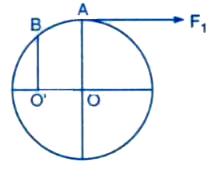 View Solution
View SolutionA block of mass m is kept on the floor of a freely falling lift .During the free fall of the lift, the block is pulled horizontally with a force of F=5N,μs=0.1The friction force on the block will be
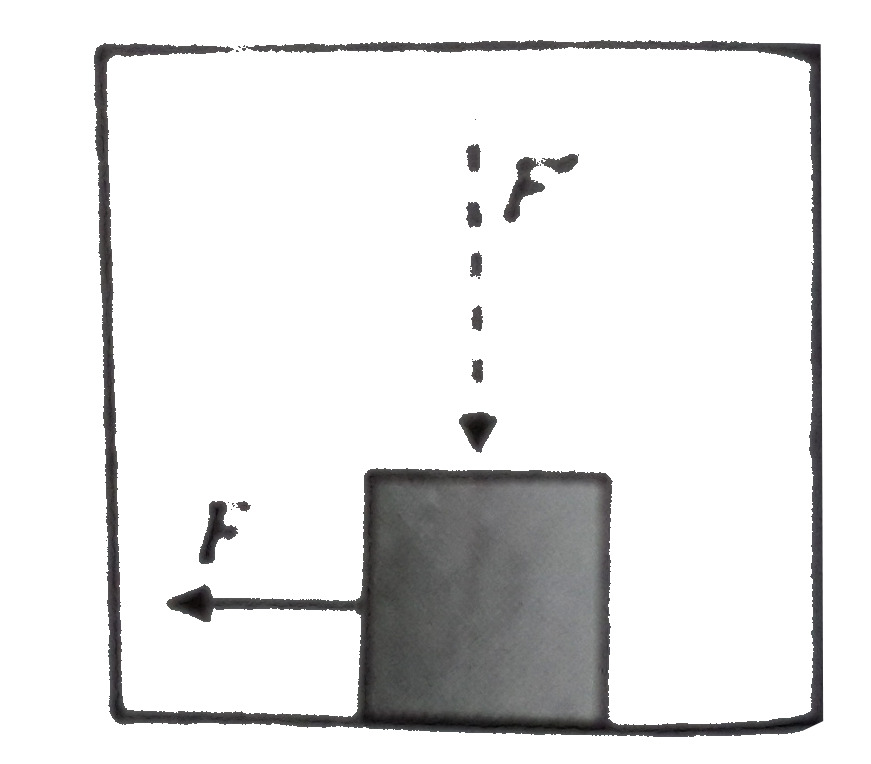 View Solution
View Solution

